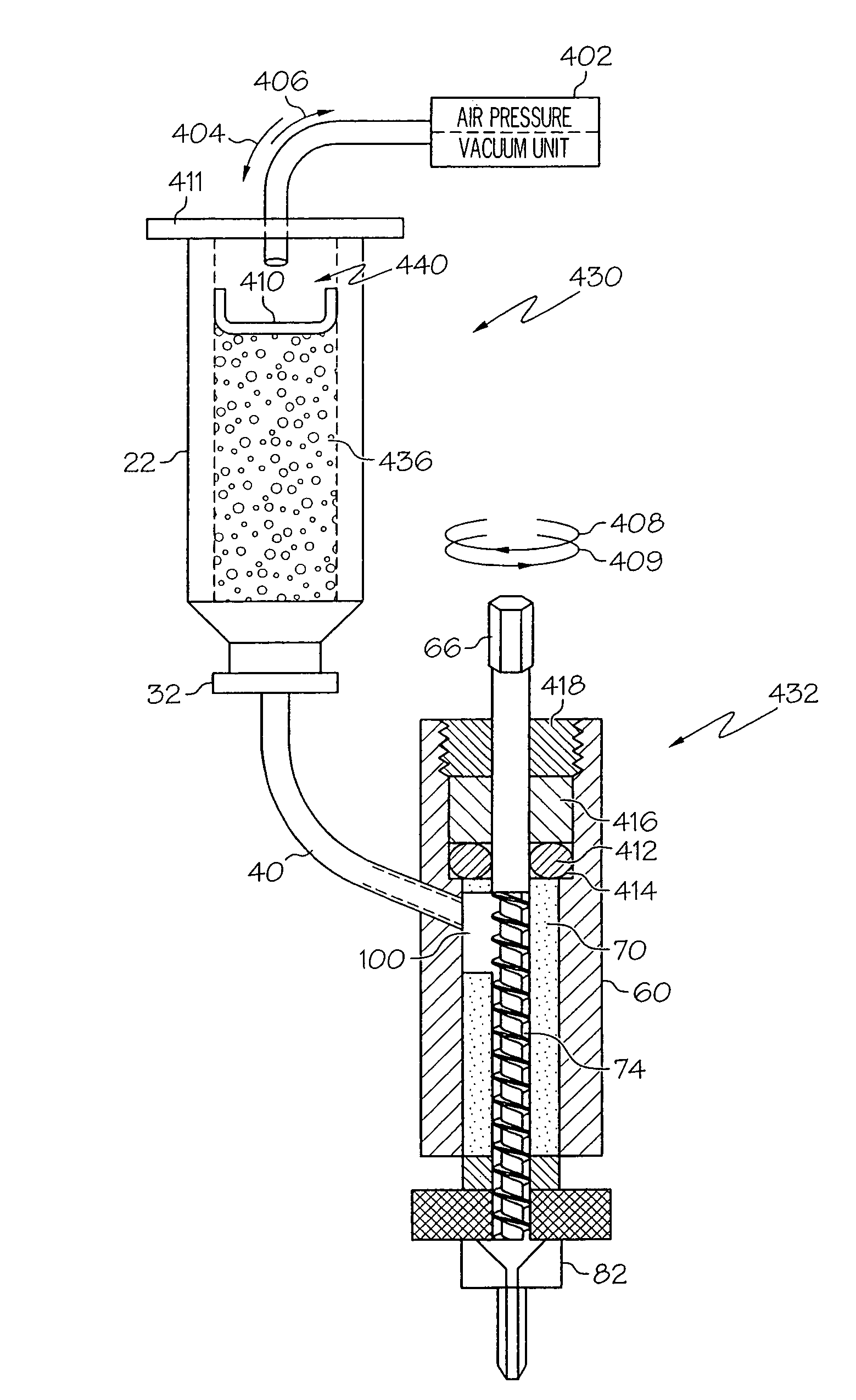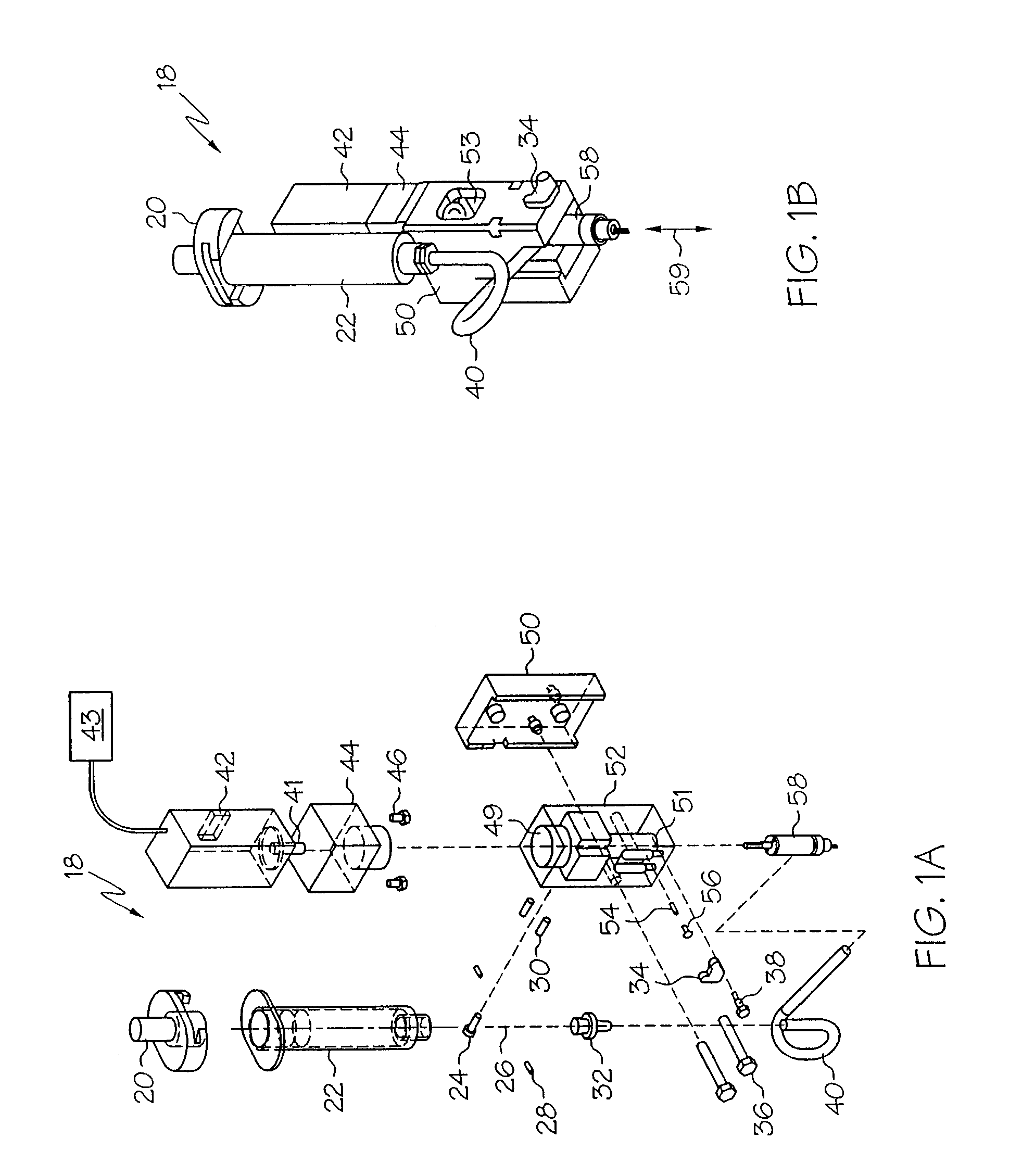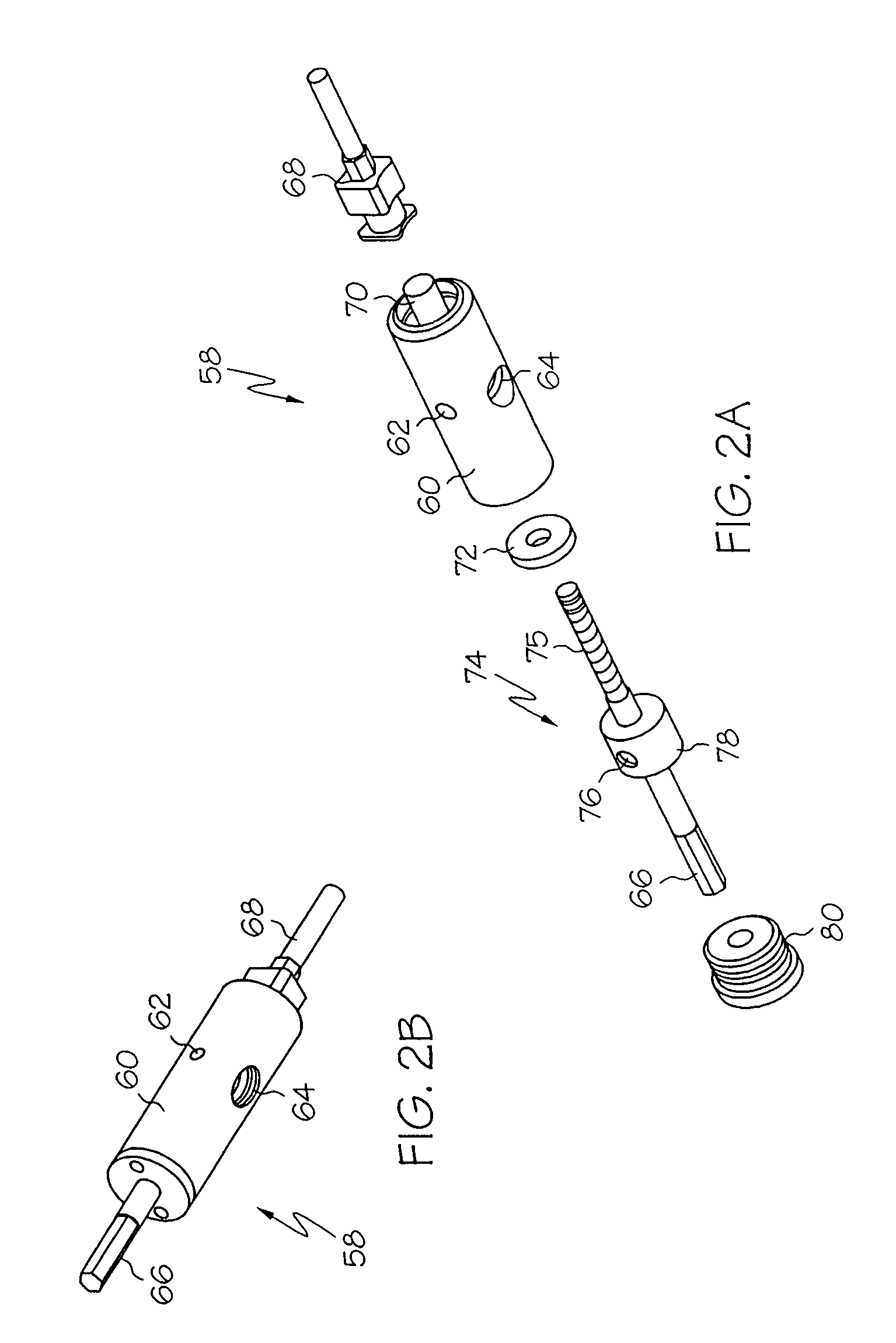Fluid dispense pump with drip prevention mechanism and method for controlling same
a technology of drip prevention and pump, which is applied in the field of fluid dispense, can solve the problems of uncontrollable fluid release, heavy motor and rotary clutch mechanism, and limited application of conventional pump systems, and achieve the effect of preventing or mitigating the release of fluid
- Summary
- Abstract
- Description
- Claims
- Application Information
AI Technical Summary
Benefits of technology
Problems solved by technology
Method used
Image
Examples
Embodiment Construction
[0041]FIGS. 1A and 1B are an exploded perspective view and an assembled perspective view respectively of a pump assembly configured in accordance with the present invention. With reference to FIGS. 1A and 1B, an embodiment of the dispensing pump 18 comprises a motor 42, an optional transmission box 44, a pump housing 52, and a cartridge 58.
[0042]The motor 42 preferably comprises a closed-loop servo motor with an independent motion controller 43. The motion controller 43 may be provided by the host dispensing platform, and may comprise, for example, a Delta Tau controller, Northbridge, Calif., USA. The closed-loop servo motor may comprise, for example, a Sigma Mini Series motor, produced by Yaskawa Electric Corp., Japan. Feedback is preferably provided by a rotary encoder, for example providing 8192 discrete counts over 360 degree rotation. The motor 42 includes an axle 41 which operates to drive the feed screw in the cartridge assembly 58 (described below). In this manner, high-perf...
PUM
 Login to View More
Login to View More Abstract
Description
Claims
Application Information
 Login to View More
Login to View More - R&D
- Intellectual Property
- Life Sciences
- Materials
- Tech Scout
- Unparalleled Data Quality
- Higher Quality Content
- 60% Fewer Hallucinations
Browse by: Latest US Patents, China's latest patents, Technical Efficacy Thesaurus, Application Domain, Technology Topic, Popular Technical Reports.
© 2025 PatSnap. All rights reserved.Legal|Privacy policy|Modern Slavery Act Transparency Statement|Sitemap|About US| Contact US: help@patsnap.com



